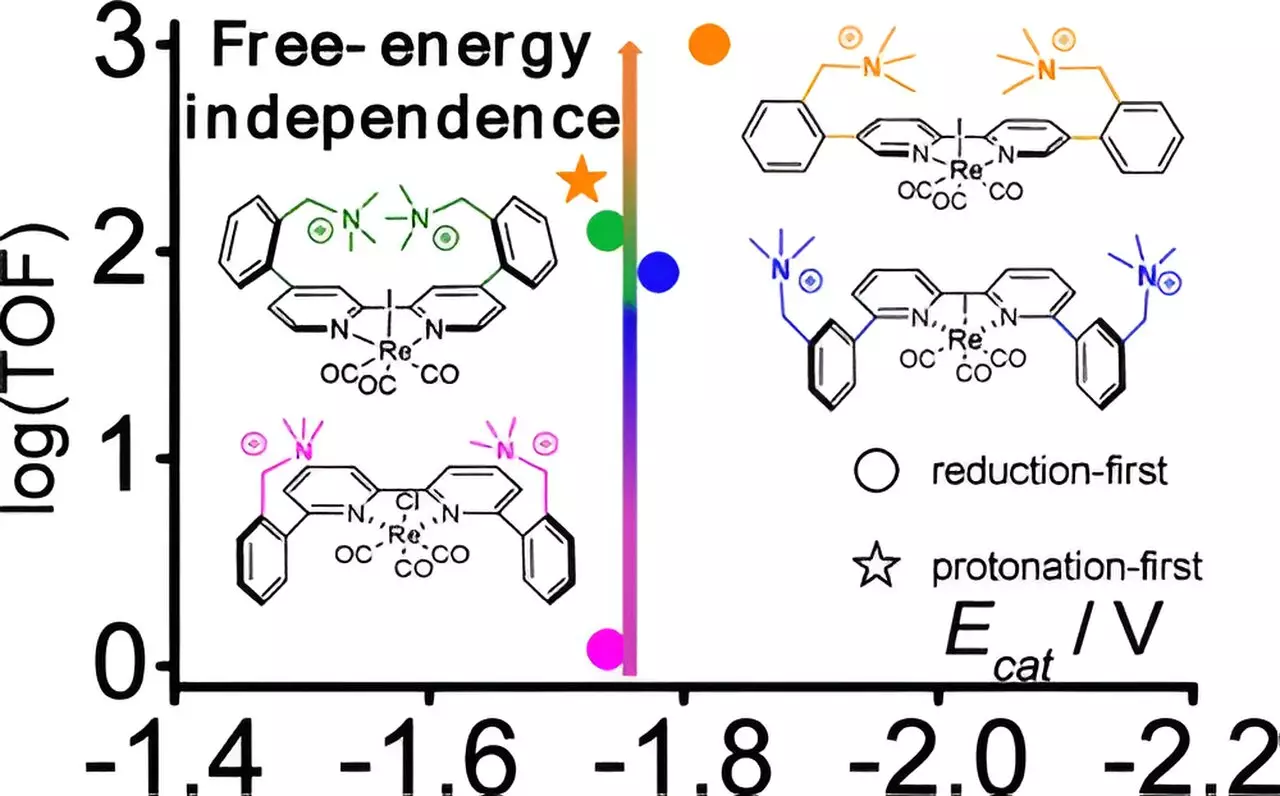The continuous rise in atmospheric carbon dioxide (CO2) remains a significant concern for global climate stability. As major contributors to this issue, various industries—including energy production, transportation, and manufacturing—employ processes that inadvertently release CO2 as a byproduct. Consequently, researchers and scientists are actively exploring innovative technologies to address this pressing challenge. Among these strategies, electrochemical reduction of CO2 stands out as a particularly promising avenue. By utilizing electrical energy, this technique has the potential to convert captured CO2 into valuable products, such as methanol and ethanol, thus not only reducing atmospheric CO2 levels but also generating usable fuels.
However, advancing this technology hinges on the development of highly efficient and rapidly operating catalysts. Identifying such a catalyst represents a challenging task, as existing solutions often demand considerable amounts of energy and may not be economically viable for widespread use. Thus, researchers are pursuing novel methods to improve catalytic efficiency, leading to significant implications for large-scale applications.
Groundbreaking Research from Brookhaven National Laboratory
Recent advancements were made by an investigative team spearheaded by scientists at the U.S. Department of Energy’s Brookhaven National Laboratory. Collaborating with Yale University and the University of North Carolina at Chapel Hill, this research culminated in findings that could change the dynamics of CO2 electrochemical reduction. The researchers report an astounding increase in catalytic activity—by a factor of 800—by modifying an existing catalyst based on the metal rhenium. This work was published in the Journal of the American Chemical Society, shedding light on a potential pathway to make these catalytic processes more energy-efficient and economically viable.
Gerald Manbeck, a chemist at Brookhaven, emphasized the economic challenges currently facing CO2 reduction technologies, stating that although several materials can facilitate this process, they often require excessive energy. The catalyst under investigation showed an impressive ability to reduce energy demands without sacrificing efficiency, signaling the promise of future innovations in catalyst design.
The research team, which also included several Brookhaven chemists, began with a rhenium-based catalytic framework, strategically altering it by introducing positively charged molecules known as cations. By manipulating the distances between these cations and the rhenium center, the researchers were able to determine that specific arrangements dramatically influenced catalytic activity. Remarkably, at certain distances, the catalyst’s performance skyrocketed, reducing the energy required for the reaction significantly.
Moreover, computational chemistry played a crucial role in illuminating the mechanistic details behind these findings. The stabilization effect provided by the cations was critical to understanding how the catalyst enabled a previously unobserved low-energy pathway for rhenium-based reactions. The significance of this discovery cannot be overstated; it suggests that simple geometric rearrangements can yield substantial increases in catalytic rates, a finding that can inspire further advancements in catalytic science.
Obtaining these critical insights required a comprehensive suite of analytical techniques. The researchers employed cyclic voltammetry, an electrochemical method used to measure energy properties and reaction rates, alongside infrared spectroelectrochemistry to analyze the structural changes occurring during reactions. Vital to their success was a sensitive apparatus designed to assess changes occurring at the interface of the solution—where catalysis occurs—and the electrode’s surface supplying electrical energy.
Such sophisticated experimental setups demonstrate the collaborative and interdisciplinary nature of modern research, enabling breakthroughs that were previously deemed unattainable.
Looking forward, the Brookhaven research team aims to further optimize their catalytic system by incorporating semiconductor-based light absorbers, such as silicon. The rationale behind integrating these materials lies in their potential to harness incoming sunlight and convert it into electrical energy, which could then be utilized to partially power the catalytic reactions. This approach promises to reduce reliance on direct electrical energy sources, enhancing overall efficiency and sustainability.
The implications of this research align closely with the mission of CHASE (the Center for Hybrid Approaches in the Study of Electric Catalysis), which focuses on harnessing solar energy to facilitate the conversion of CO2 and water into liquid fuels. By integrating this innovative method into existing frameworks, the steps toward a more sustainable energy future may become increasingly feasible.
The journey to combating atmospheric CO2 emissions involves a myriad of technological innovations. Through dedicated research efforts and the collaborative spirit of scientists, the path towards efficient electrochemical reduction of CO2 is becoming clearer, holding the promise of transformative impacts on global sustainability efforts.

